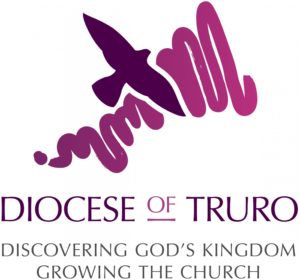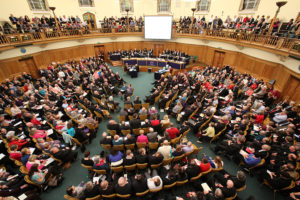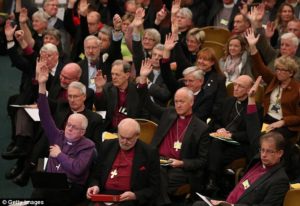 In the post of today I referred to a recent review put out by the Truro Diocese referring to a convicted paedophile who has been convicted and sent to prison. Gilo has kindly submitted further information on the background to this case which fills out the information in the last paragraph of my blog post. Some of the points that Gilo raises are quite detailed but the reader will be able to discern the point that I have made in my piece that the powers that be do not oversee safeguarding with a degree of professionalism which would help us trust their competence in this area. Gilo writes:
In the post of today I referred to a recent review put out by the Truro Diocese referring to a convicted paedophile who has been convicted and sent to prison. Gilo has kindly submitted further information on the background to this case which fills out the information in the last paragraph of my blog post. Some of the points that Gilo raises are quite detailed but the reader will be able to discern the point that I have made in my piece that the powers that be do not oversee safeguarding with a degree of professionalism which would help us trust their competence in this area. Gilo writes:
There are many holes in this review from Truro Diocese. I will pick out a few.
Omission of any mention of the CofE 2007-09 Past Case Review (PCR) is notable. And it’s worth having a little background on that for your readers. The PCR looked at 40,747 files dating back more than 30 years. It’s scope lasted two years and the concluding 2010 report identified only 13 cases needing formal action. Bishop Anthony Priddis, chair of the Church’s Central Safeguarding and Liaison Group which effectively led the PCR across all dioceses confidently said at the time “As a result of this Review, we are now able to say that nobody representing the Church in a formal capacity has allegations on file that have not been thoroughly re-examined in the light of current best practice, and any appropriate action taken”
The Dowling Review in fact mentions the PCR without even realising it – when it cites Bishop Bill Ind’s recollection that an audit of files had taken place in 2008 by Martin Follett, Diocesan Registrar at the time. But the reviewer, Dr Andy Thompson, seems unaware of the PCR. It’s odd that the “fat file” wasn’t unearthed, but took another 4 years to come to light. I’m told by a reliable source that the “unusual place” the file was found, was no more unusual than the back of a filing cabinet in the Bishop’s residence/office.
Why has Dr Andy Thompson left out any mention of Truro diocesan failure to carry out the PCR properly? Probably because he has no awareness of the history, little understanding of context, and has been given a carefully restricted remit.
Incidentally, when the PCR report came out in 2010, members of MACSAS approached the Church and asked whether the 13 outstanding cases included 22+ they were aware of in one diocese alone! The PCR was an expensive paper-clip hunt, and MACSAS told the Church that information on file was scant as much history and disclosure of abuse was simply never filed – or when it was – was often later destroyed. But it’s strange that Truro did not find such a significant paper-clip. Perhaps the Diocesan Communications Officer and Bishop’s Research Officer at the time made sure it was ignored. That was Dowling himself.
But there is another much more glaring omission. There is no mention of any survivors. They are invisible. Presumably they experienced the cover-ups and failure of appropriate response. Some may have tried to raise awareness as they watched Dowling rise up the diocesan ladder. But their experience and any insights on how the diocese responded to them – is totally absent. This omission is disturbing. It suggests a remit very purposefully constructed to withhold information whilst giving out carefully selected information. I imagine Dr Thompson cannot be blamed. But perhaps he should have asked Nigel Druce of the Diocesan Safeguarding Panel why such a wafer-thin remit. Why are the primary voices, the voices of survivors, not being invited to offer any insights to this diocese? Dr Andy Thompson is a leading lay figure in the diocese and on the Bishop’s Council in the diocese. I can’t help thinking a more independent and experienced reviewer would have spotted this obvious hole immediately.
The previous bishop of the diocese, Tim Thornton now Bishop at Lambeth, gets a mention in the telephone interviews, but any further involvement ends. Incidentally his chaplain cited in the review, was one of the diocesan figures I spoke with about my case. His response was priceless. A very sarcastic and mocking: “What did you expect me to do – go bang on the door of Lambeth Palace for you!” before putting the phone down. He was on the Safeguarding Advisory Panel at the time. That should indicate the culture of delinquency, deference and dysfunctionality present within some of these diocesan structures. It should also indicate the need for an independent structure – which we heard again and again expressed by many voices during the IICSA hearings.
Returning to this review, in short the remit seems entirely self-referential from a diocese that looks as if it’s protecting more than is revealed. The former Bishop of Truro and the acting Bishop of Truro (Bishops Tim Thornton and Chris Goldsmith) ought to be asking serious questions of the way this process was initiated and led. And I hope General Synod will be asking critical questions of the hierarchy and the broken culture it has so often engendered in July’s meeting in York.
Gilo





